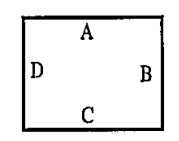Some of the very old glass objects appear slightly milky instead of being transparent. Why ?
Step-by-Step Solution:
1. Understanding Glass Composition:
- Glass is primarily made up of silica (SiO₂). It exists in both crystalline and amorphous forms.
2. Nature of Glass:
- Glass is an amorphous solid, meaning it lacks a long-range order in its atomic structure. However, it can have some degree of crystallinity.
3. Aging Process:
- Over time, due to environmental factors such as changes in temperature and humidity, the structure of glass can change. This process is known as aging.
4. Crystallization:
- As glass ages, some of the atoms within the glass may rearrange themselves into a more ordered crystalline structure. This transition from amorphous to crystalline can lead to a loss of transparency.
5. Water Absorption:
- The aged glass can absorb moisture from the environment. This absorbed water can interact with the crystalline regions, leading to the formation of a layer that scatters light.
6. Resulting Cloudiness:
- The combination of crystallization and water absorption results in a milky or cloudy appearance in the glass. This is due to the scattering of light by the newly formed crystalline structures and the moisture layer.
7. Conclusion:
- Therefore, old glass objects appear slightly milky instead of being transparent due to the crystallization process and the absorption of water over time.
---
- Glass is primarily made up of silica (SiO₂). It exists in both crystalline and amorphous forms.
- Glass is an amorphous solid, meaning it lacks a long-range order in its atomic structure. However, it can have some degree of crystallinity.
- Over time, due to environmental factors such as changes in temperature and humidity, the structure of glass can change. This process is known as aging.
- As glass ages, some of the atoms within the glass may rearrange themselves into a more ordered crystalline structure. This transition from amorphous to crystalline can lead to a loss of transparency.
- The aged glass can absorb moisture from the environment. This absorbed water can interact with the crystalline regions, leading to the formation of a layer that scatters light.
- The combination of crystallization and water absorption results in a milky or cloudy appearance in the glass. This is due to the scattering of light by the newly formed crystalline structures and the moisture layer.
- Therefore, old glass objects appear slightly milky instead of being transparent due to the crystallization process and the absorption of water over time.
Topper's Solved these Questions
- BOOK - MODERN PUBLICATIONCHAPTER - SOLID STATEEXERCISE - CONCEPTUAL QUESTIONS 221videos
SOLID STATE
- BOOK - MODERN PUBLICATIONCHAPTER - SOLID STATEEXERCISE - ADVANCED LEVEL PROBLEMS8videos
SOLID STATE
- BOOK - MODERN PUBLICATIONCHAPTER - SOLID STATEEXERCISE - PRACTICE PROBLEMS48videos
SOLID STATE
- BOOK - MODERN PUBLICATIONCHAPTER - POLYMERSEXERCISE - Competition file (OBJECTIVE TYPE QUESTIONS) (C. MULTIPLE CHOICE QUESTIONS)(Integer Type Questions)6videos
POLYMERS
- BOOK - MODERN PUBLICATIONCHAPTER - SOLUTIONSEXERCISE - UNIT PRACTICE TEST14videos
SOLUTIONS
Similar Questions
Why does the sky appear dark instead of blue to an astronaut ?
View SolutionWhy does the sky appear dark instead of blue to an astronaut ?
View SolutionWhy does the sky appear dark instead of blue to an astronaut ?
View SolutionWhy does the sky appear dark instead of blue to an astronaut?
View SolutionWhy does the sky appear dark instead of blue to an astronaut?
View SolutionSome beverage glasses are made with very thick walls. Why ?
View SolutionWhy does the sky appear dark (or black) to an astronaut instead of blue ?
View SolutionLetters A, B, C and D are written on a cardboard as shown in the figure below. The cardboard is kept at a suitable distance behind a transparent empty glass of cylindrical shape. If the glass is now filled with water, one sees an inverted image of the pattern on the cardboard when looking through the glass. Ignoring magnification effects, the image would appear as
 View Solution
View SolutionWhile explaining the modern concept of an atom,Jack asked the teacher why are electrons, assumed to be in continuous motion around the nucleus instead of being stationary? What could be the explanation given by the teacher?
View SolutionWhile explaining modern concept of atom , Jack asked the teacher " why are electrons , assumed to be in continuous motion around the nucleus instead of being stationary" ? What could be the explanation given by the teacher?
View Solution

